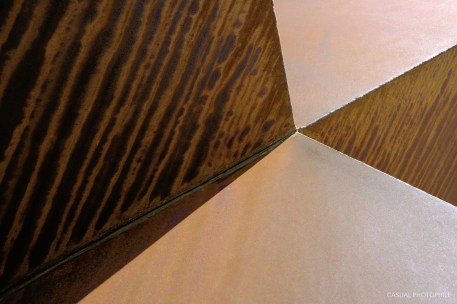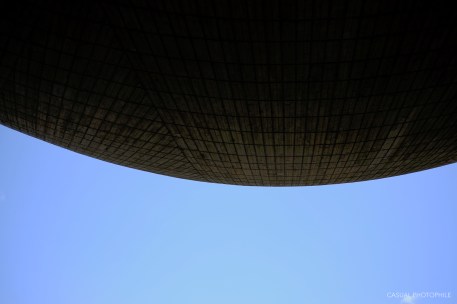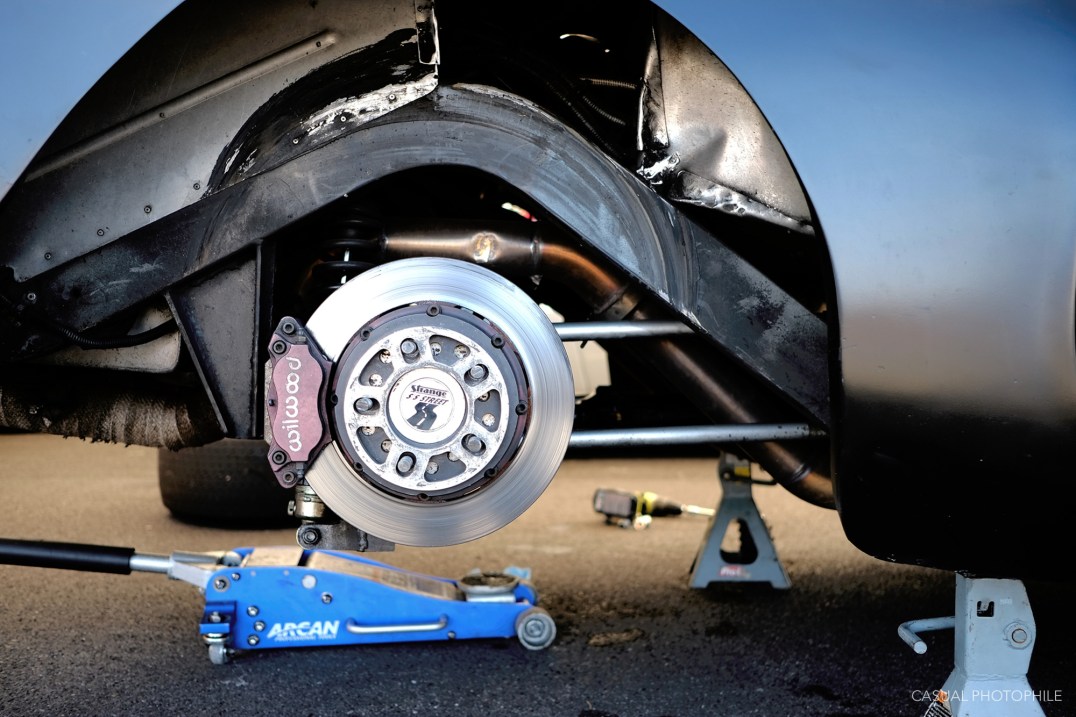Lens names seldom roll off the tongue. Most sport an alphabet soup of millimeters and f-numbers, and while these tell us most of what we need to know about a lens, this valuable info is rarely evocative on its own. Fujifilm’s new XF 23mm F2 WR is no different, and it even brings some new letters and numbers to the ranks of Fuji’s X-mount lenses. Skip the technical jargon and what do we have? Fuji’s best and finest kit lens.
When the first interchangeable lens Fuji X-Series cameras launched in early 2012, they were fairly revolutionary cameras. Though Fuji’s weren’t the first mirrorless cameras to come to market, both Olympus and the leather-apron’d anachronists at Leica beat Fuji to the punch by a wide margin, Fuji offered a compelling blend of user-friendly controls, modern features, a unique APS-C sensor, and a range of brand new fast prime lenses right from the outset. But while these primes dominated the initial offerings, the kit lens for most Fuji cameras was the XF 18-55 mm f/2.8-f/4 OIS.
A strong performer in its own right, the bulky 18-55 was an odd choice alongside the often svelte primes, and downplayed some of the system’s inherent merits in terms of compact dimensions and light weight. But since the launch of the X-Pro 2 last year, this has started to change. On the heals of the new Pro came the XF 23mm F2 WR, and it’s now an available kit lens for both the X-Pro 2 and the recently launched X-E3 mirrorless cameras. This is a welcome change, as the lens is a great piece of glass and a very capable all-rounder (with Fuji’s crop-sensor, the 23mm lens offers roughly the same field of view as a 35mm lens would on full-frame).
That all-rounder status is what really sets this lens apart from its brethren, which on paper seem to be plentiful and a bit too similar. Fuji’s been offering a different 23mm, the XF 23mm f/1.4, since the beginning of the Fuji X-system, and they’ve also produced the XF 27mm f/2.8 pancake lens. Things seem congested. But get to know this system and you’ll understand that each lens serves a very specific purpose. The XF 23mm f/1.4 is a pretty hefty lens that produces unbelievable bokeh. The 27mm is the tiniest lens you may ever see. The XF 23mm f/2 WR lands somewhere between these two lenses in terms of both size and function. And it may just be the best of the three.
The 23/2 weighs just 180g, and features an all-metal body, ribbed metal focus and aperture rings, and a sturdy metal mounting flange. It’s fairly compact overall, with an unusual tapered shape that’s quite a bit smaller at the filter thread than at the mounting flange. Compact form noted, the lens does protrude from the face of the camera about three times as far as the XF27 without the hood and lens cap attached, making it impossible to pocket unless you wear JNCO pants or a ludicrously over-sized Gore-tex jacket. With the included lens hood fitted, which eliminates the mild flare that this lens seems prone to, it naturally presents an even larger footprint.
In the hand, the XF23 feels solid. Really solid. Alongside my long-suffering XF 18-55 and XF 27, the XF 23 shows a marked improvement in build quality. The aperture ring is fully stopped at both extremes, and each detent feels solid. The 18-55’s aperture ring, by comparison, has detents, but you can spin the ring forever, which I’ve always found a bit annoying.
The focus ring is substantially thicker than on either of my other Fuji lenses, making it much easier to use. I’m not certain if this is the case, but it certainly seems that the manual focusing algorithm has improved dramatically since the first generation lenses. Whatever the change, the XF23 focuses more like a manual focus lens than its older counterparts. Focus happens in a much more linear way from minimum focus out to infinity than on other Fujis.
Last but not least, the lens is weather resistant, making it a great match for the weather resistant Fuji X-T series bodies and the X-Pro 2. Critically for a weather sealed lens, the focusing is all internal. Several first generation Fuji X-series lenses, including the XF 27, have external focusing, which invites dust and particulates into the body of the lens as it breathes. Though some may dismiss this weather-sealing as superfluous, there’s really nothing like owning a camera that can handle the elements. Just ask Nikonos fans. With this lens, you won’t have to worry.
A lot of this talk of build quality need barely be mentioned; virtually all of the XF lenses have been praised for their exceptionally robust build. But while most of them feel fantastic, not all are great optical performers. I’ve not tried the XF 60mm f/2.4 Macro myself, but I’ve heard some pretty nasty criticisms and seen some iffy results, and I flat out did not like the XF 18-135mm that I tried. So while I know Fuji’s system offers some of the best optics being made right now, I also understand that some of them can be duds. And the first thirty minutes with the XF 23mm F/2 WR did not have me feeling good about my future with the lens.
When the package arrived from B&H, I carefully mounted the new 23 to my X-E1 and proceeded to chase my cat around the apartment. Weirdly, the lens didn’t want to focus on her black fur at all, and seemed to struggle with other matte-finish things around my house to a degree I’ve never experience with any other Fuji lens.
It also failed the “how close to my girlfriend’s face can I get with a camera before she yells at me” test, which I have always found to be a valuable data point in close-focusing tests.
I’m not sure what caused the issue, because every other time I went to use the lens, the autofocus proved to be virtually foolproof. Whether I was photographing shiny chrome, glossy painted metal, or even a piece of dark, shadowy hardware deep in an engine bay, the XF 23 worked perfectly. By some wizardry, this lens would even focus easily on a clear blue patch of sky, a trick that I have never been able to replicate with either of my other Fujis. Call those first moments a fluke, and once we got past those, this lens proved to be an incredible performer.
Its design is what we’ve come to expect from Fuji; masterful and complex. With ten elements in six groups, and two aspherical elements, this is one of the most intricate primes in the range. By contrast, the XF 23mm f/1.4 from Fuji’s first series had just one aspherical element in its 11-element design. The latest XF 23 is tack sharp, with good performance corner to corner. Shot wide open we’re seeing a bit of softness compared with something like the XF 23/1.4, but since that is just about the sharpest lens I’ve used, I’m not surprised. The XF 23/2 is no slouch, it’s just not as amazing as its much larger and heavier predecessor when it comes to sharpness.
But generally speaking, image quality is superb. For those who’ve used Fuji’s X-series for the past few years, none of this will come as a surprise. They’re consistently churning out lenses that are simply among the best in the world, year after year. Colors from the lens, combined with the always incredible Fuji sensors, are fantastic. Punchy, without being oversaturated or garish, images are simply beautiful. Fuji’s EBC (multi-coating) does well to massage those photons into perfection, with chromatic aberration and other disgusting optical anomalies mitigated beautifully.
Sure, there’s a tendency to vignette against the standard 18% grey test drops, but in the conditions in which I (and most normal shooters) use this lens, the falloff presents almost no problems.
In fact, the lens really never seemed to cause anything but easy-going joy, and its versatility surprised me. I kept finding myself in situations where a lens as short as the XF 23 wouldn’t have been my first choice, yet only once did I remove it from my camera while I had it. In the three weeks I used it, I shot a car for sale for a friend, an air show, live motor racing and more, and I never felt compelled to swap it out. The lens’ relatively fast f/2 aperture made it useful inside dark hangars, and dark car interiors, and allowed me to consistently use a full-stop slower ISO than my XF 27 allows. For such a short lens, it also produced surprisingly pleasant and round bokeh, probably on account of the nine rounded blades (which seem almost standard for Fuji’s lenses). Sure, if you own a Bokehlicious shirt, you won’t be thrilled with the out of focus areas, but the XF 23 certainly punches above its weight.
Packaging the lens back up, I was actually sad to see it go. I really enjoyed this lens, and rather wanted to keep it. Not enough to consider moving to Tangier and changing my name just to avoid shipping it back, but certainly enough to consider buying a copy for myself. But when I checked in to B&H, I had reason to pause. The problem is that I already own the XF 27. For me, this lens doesn’t add enough to my current catalog of lenses to justify purchasing it. It’s a terrific piece of metal and glass, but in my specific case that just isn’t enough. That said, if I find myself buying the new X-E3 I’ll certainly be doing so with this lens attached.
For users new to the system, or for those who don’t own the 23mm f/1.4 or 27mm, this calculus will be entirely different. Since Fuji’s recent price adjustments, the old XF 27 and this far superior XF 23 carry the same low price-tag, making the choice easier. Unless you need a pancake, buy the 23mm. In nearly every way, it’s a better lens, and if you’re buying a new Fuji camera this is the best kit lens you can get. Hell, it’s one of the best lenses, kit or not.
Want your own Fuji 23?
Buy it from B&H Photo
Follow Casual Photophile on Facebook and Instagram
[Some of the links in this article will direct users to our affiliates at B&H Photo, Amazon, and eBay. By purchasing anything using these links, Casual Photophile may receive a small commission at no additional charge to you. This helps Casual Photophile produce the content we produce. Many thanks for your support.]


























Surprised to see a non vintage/film lens to be featured here. Just to point out, there are a few spelling errors in the article